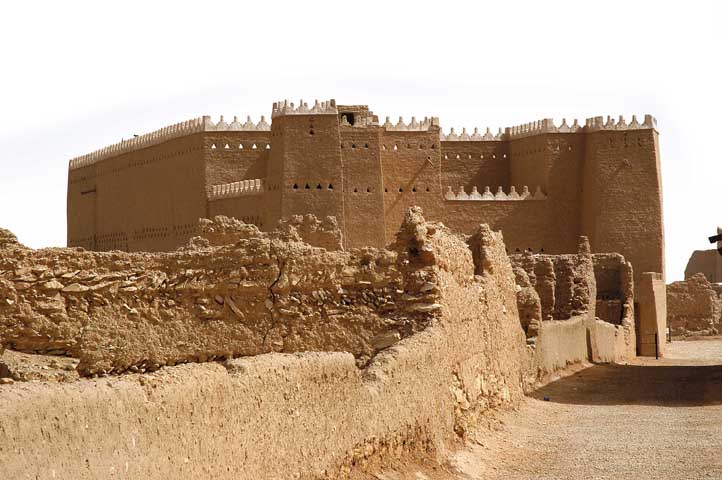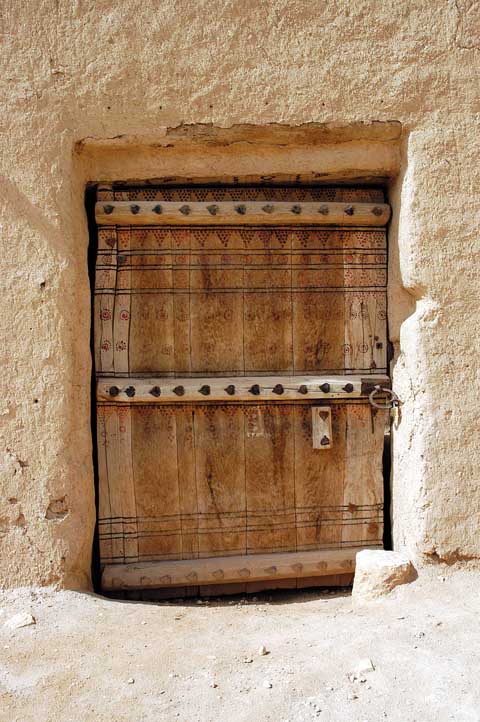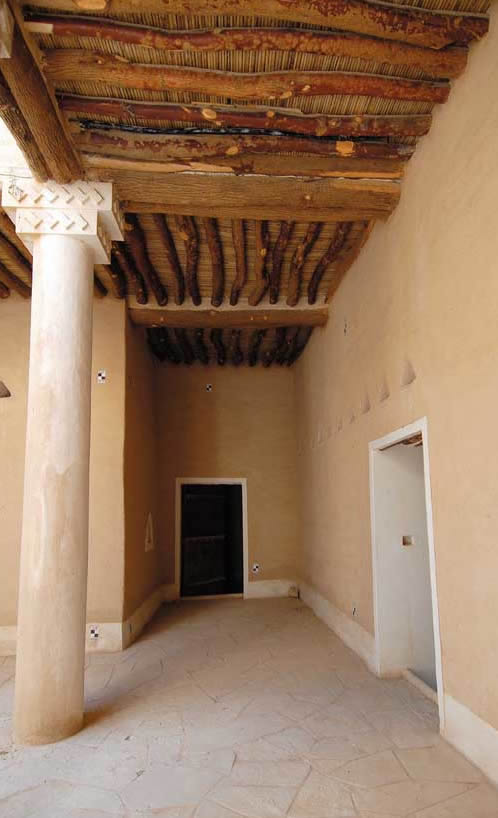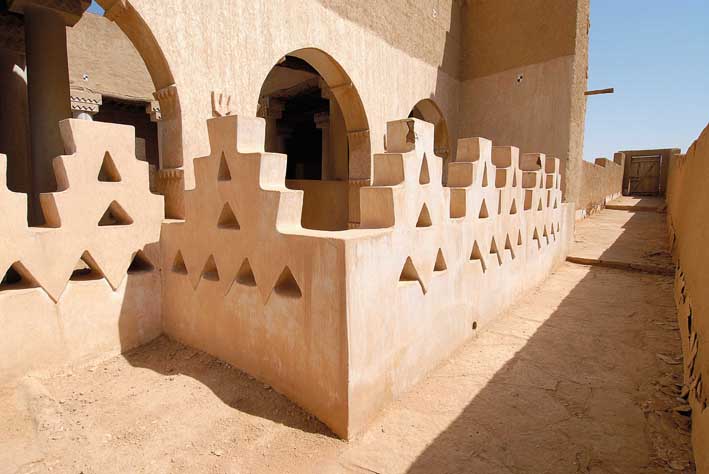

Al-Turaif Quarter, Al-Diriyah
A New World Heritage Site
 |
Al-Turaif Quarter in historic Al-Diriyah, former capital of the Saudi royal family, has found a place in UNESCO’s World Heritage List, a global recognition of the Kingdom’s rich past.
By Vinod Menon
Al-Turaif Quarter, in Saudi Arabia’s ancient city of Al-Diriyah, has joined the highly valued UNESCO list of over 900 properties of “outstanding universal value,” when the world body included it in its new World Heritage List. The UNESCO has thus recognized the historical importance of the Arabian Peninsula as the home of an ancient civilization, and has brought the region into the spotlight of international historians.
What makes the concept of World Heritage exceptional is its universal application. World Heritage sites belong to all the peoples of the world, irrespective of the territory on which they are located. Al-Diryiya’s Al-Turaif Quarter has thus acquired universal significance, making it of “outstanding value to humanity,” as such heritage sites are portrayed by UNESCO.
Besides other criteria set by the UNESCO, the protection, management, authenticity and integrity of properties are important considerations while compiling the list. In this context, the Saudi Commission for Tourism and Antiquities (SCTA) and its chairman Prince Sultan bin Salman have been working relentlessly to preserve the Kingdom’s heritage sites and win global recognition for them. The grounds for registering Al-Turaif Quarter in the World Heritage List were laid on August 13, 2006 when the SCTA was assigned the task of coordinating with the UNESCO. On October 16, 2006 SCTA submitted Al-Turaif as part of the initial list of sites which had been scheduled to be registered in the list. Due recognition came on July 31, 2010 when Al-the district was registered with the World Heritage List.
Riyadh Governor Prince Salman bin Abdulaziz, who is the chairman of the Higher Committee of Al-Diriyah Development, is upbeat over the UNESCO recognition. This, he says, confirms the political importance of the site as the capital of the First Saudi State and a scientific and a cultural center in the Arabian Peninsula – besides its historical and architectural importance. Saudi Arabia has a wealth of cultural and historical features. It is important that the whole world is made aware of these potentials as well as the Kingdom’s ability to positively interact with others to reflect its contribution to the transformation of world culture, Prince Salman says referring to the heritage treasures found across Saudi Arabia.
Rich history
Al-Diriyah is an oasis located on the banks of Wadi Hanifa on the outskirts of Riyadh. It is set amidst stunning landscapes and scenic surroundings, reflective of the inhabitant’s strong cultural experience.
The name Al-Diriyah is attributed to its inhabitants and the early settlers. It was believed to be derived from the name Al-Doroa Hissn. Al-Doroa is a tribe that had settled in Wadi Hanifa and ruled Hajr and Al-Jaza areas for several years.
Al-Diriyah was an important station along the trade route which linked the west of the Arabian Peninsula to its east, and was a pilgrimage road up to Makkah. It also controlled a number of villages along the Wadi Hanifa and its influence was felt up to Darmain in the western side of Twaiq Mountian and Aba Al-Kabash to the north of Al-Diriyah.
The SCTA has maintained authentic accounts of the rich history of the region.
In 1788-1818, during the reign of Imam Muhammad bin Saud, founder of the First Saudi State, who adopted the call for reforms of Sheikh Mohammed bin Abdul Wahab, a new page turned in the history of Al-Diriyah. It became the most powerful city in the entire Najd region, adhering to the message of reforms as well as achieving success on many fronts, with a strong political, economic, military and religious standing. The region was prosperous, and its markets became popular with a great number of merchants. It gradually became a center for knowledge and education and the destination of seekers of education around the globe.
The leaders of the First Saudi State were known for their honesty and dedication to religious values generated confidence and goodwill among the people. Most of the area throughout the Arabian Peninsula was under the control of Al-Diriyah including Al-Ared land, Al-Ahsa, Al-Qassim, Shamar Mountain, Makkah, Al-Madinah, Al-Hejaz, Al-Taif in the south, Tuhama and Yemen. 
Al-Diriyah was the most famous city in Wadi Hanifa during the 17th and 18th centuries. It maintained its renowned status even after being destroyed, along with its neighboring areas, by the Ottoman army in 1818.
Development program
On July 21, 2008 the Ar-Riyadh Development Authority was assigned the task of development and preservation of the historic area. The program comprises development of a number of villages and neighborhoods along the north bank of the valley, including the Qasiba, Al-Zahra, Al-Zowaihira, Al-Bejairi, Al-Mlaibeed, and along the west bank, Al-Turaif Quarter. The geographical zone of the program includes Al-Diriyah’s borders during the reign of the prosperous First Saudi State. The project is being executed in collaboration with SCTA, Ar-Riyadh Development Authority and Al-Diriyah municipality.
With Al-Diriyah’s Al-Turaif Quarter, and earlier Madein Saleh in the northwest of Saudi Arabia, finding an honored place in the UNESCO list, it may not be too far-fetched to anticipate the roster to swell with several more Saudi heritage sites.
Getting on the list has a well laid out process of its own.
To begin with, only countries that have signed the World Heritage Convention, pledging to protect their natural and cultural heritage, can submit nomination proposals for properties on their territory to be considered for inclusion in UNESCO’s World Heritage.
Once a site has been nominated and evaluated, it is up to the intergovernmental World Heritage Committee to make the final decision on its inscription. The Committee meets once a year to decide which sites will be inscribed on the World Heritage List. It can also defer its decision and request further information on sites or it can reject inscription downright.